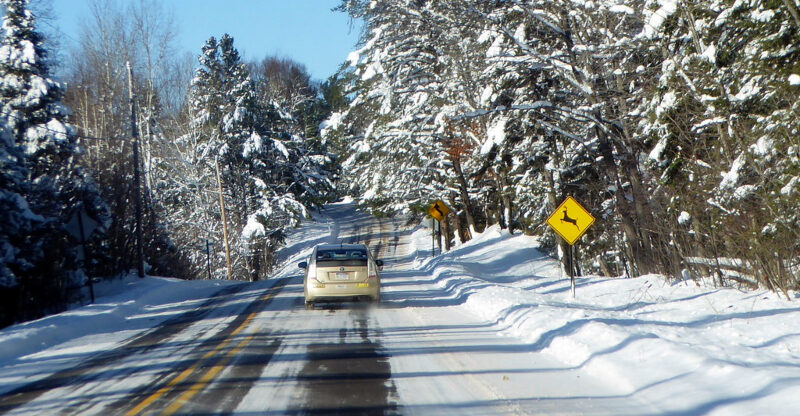Winter EV 101 – Preparing Your Electric Car for Snow
Winter is just around the corner! If you live somewhere higher north, chances are you and your car have already encountered the first cold air breezes and maybe even a few early snowflakes. When winter comes, your car care habits need to change to match the upcoming cold season. However, is there anything different you need to consider if you own an electric vehicle?
Despite the bad-mouthers saying you can’t drive an EV during winter, electric vehicles will take you from A to B even on cold winter days, as long as you care for them properly. Here’s what you should take in account when getting your EV ready for winter days. This is Winter EV 101 support!
Charging Habits
During summer time, charging your EV is a rather easy job. Just park it near a charger, plug it in and let it fill up the battery with range-boosting electrons. If you sometimes reached a charging station with only one or two miles left of range during summer time, this behavior won’t be without consequences during winter.
Here’s the deal: in low temperatures, the batteries of electric vehicles behave differently. For one, they will discharge faster as the temperature gets lower and will also tend to charge slower compared to charging in spring or summer weather. As such, keep in mind the following:
Don’t let the battery drop below 25%
Unlike summer days, make sure you keep the battery charged to a higher percentage at all times. This will inevitably mean more trips to a charging station but will ensure you have enough battery to push through a blizzard or to keep the car warm if you’re stuck in snow. A rule of thumb is to keep the battery above 25% charge at all times. Ideally keep it over 50%, especially during very cold days.
Allow more time for charging
Unlike what the common misconception may say, electric cars don’t charge linearly. In other words, as the battery approaches 100% charge, charging speed decreases. This is set in place to protect the Lithium Ion cells from overcharging and prolong their life.

During winter time, due to low temperatures, charging will be slower from the start. If you charge your car at home, this will likely affect you less. However, if you’re planning for a 20-minute charging break during lunch time, expect to spend at least 10 minutes extra for the same amount of range.
Pre-condition your EV
During winter time, your electric vehicle will spend the most amount of energy as it starts cold in the morning. This happens for two main reasons:
- the battery needs to be warmed up to optimal temperature
- the cabin heating requires a lot of power
Due to the above factors, it should be no surprise if your car’s range drops by several miles and you’ve barely made it out to the first intersection. Thankfully, here’s a quick fix to winter EV heating up.
If you are able to charge your car at home, over night, pre-conditioning your vehicle in the morning will avoid the hassle described in the first paragraph. Many electric vehicles have the option of remote-starting. As such, you can start your vehicle while it is still charging, half an hour before you are about to leave the house.
With the EV on and still plugged into the wall charging outlet, the battery will heat up and the cabin will become warm all while using power from the grid instead of the battery. In the end, when you leave your house, you’ll benefit from a full driving range and a cozy cabin.
Keep regenerative braking on
During winter driving, you should brake smoother in order to avoid locking up the wheels and getting into a slide. The best way to do this is by keeping regenerative braking on and lifting your foot from the throttle early into a stop light or intersection.
This will not only ensure you maintain traction at the wheels but will also charge the battery slightly, adding precious miles to your EV range.
Don’t drive like it’s summer
We’ve said it above. Heating eats up a lot of range in an electric vehicle. Don’t overuse the heating system by dressing inappropriately for winter. Lowering the cabin temperatures by as little as 4 degrees Fahrenheit will greatly improve the electric range. Skip the T-shirt for a cozy sweater and let your EV run for longer on a single charge.
Here’s another trick. Use the heated seats and steering wheel functions instead of regular vent heating to save even more power.
Tackling Winter Dangers in an EV
Be it an ICE or an EV, cars face pretty much the same dangers when driving in winter conditions. The above paragraphs covered battery-related tricks. Further on, we shall discuss how to ensure you will make it out to your destination when driving an EV during blizzard or snow-covered roads.
Invest in winter tires
Despite the appearances, winter tires are not the same. While you may be tempted to save some money by going for a budget winter tire set, the savings are not worth compromising your safety. Think about it this way: a premium set of winter tires will get your electric vehicle to grip better and stop faster.

And, given that for a regular user, a set of tires will last at least 3 seasons, your investment over time isn’t as big as it seems at first.
Tire chains
If the weather is to become really bad, a set of tire chains for your drive wheels will do wonders when you’re stuck in snow. Go for a set of tire chains that can be mounted easily then make use of that EV instant torque to get yourself out of a sticky situation on the road.
Drive only when safe
Sometimes, no matter how many precautions you take, the best choice is to not drive in bad weather. Check your weather forecast before going out. If winds are really high and snow covers most of the road you might want to postpone your trip.
Conclusion: EVs Work in Winter, Just Be Prepared!
There is no reason why you shouldn’t drive your EV all year long, regardless of the weather. Keeping in mind the above good practices, you will get your EV working during winter time without any issues.
How do you take care of your electric car during the cold season? Have any tips for the rest us? Let us know in the comments below and don’t forget to share this article if you enjoyed it.








